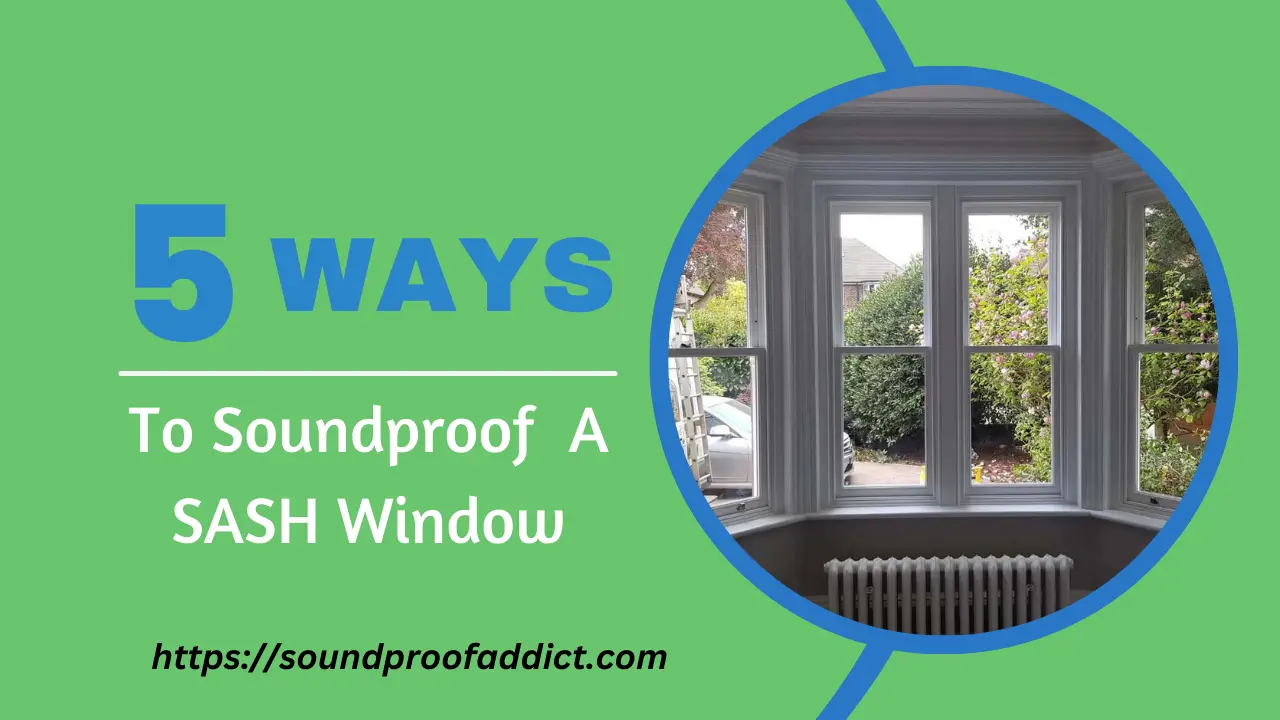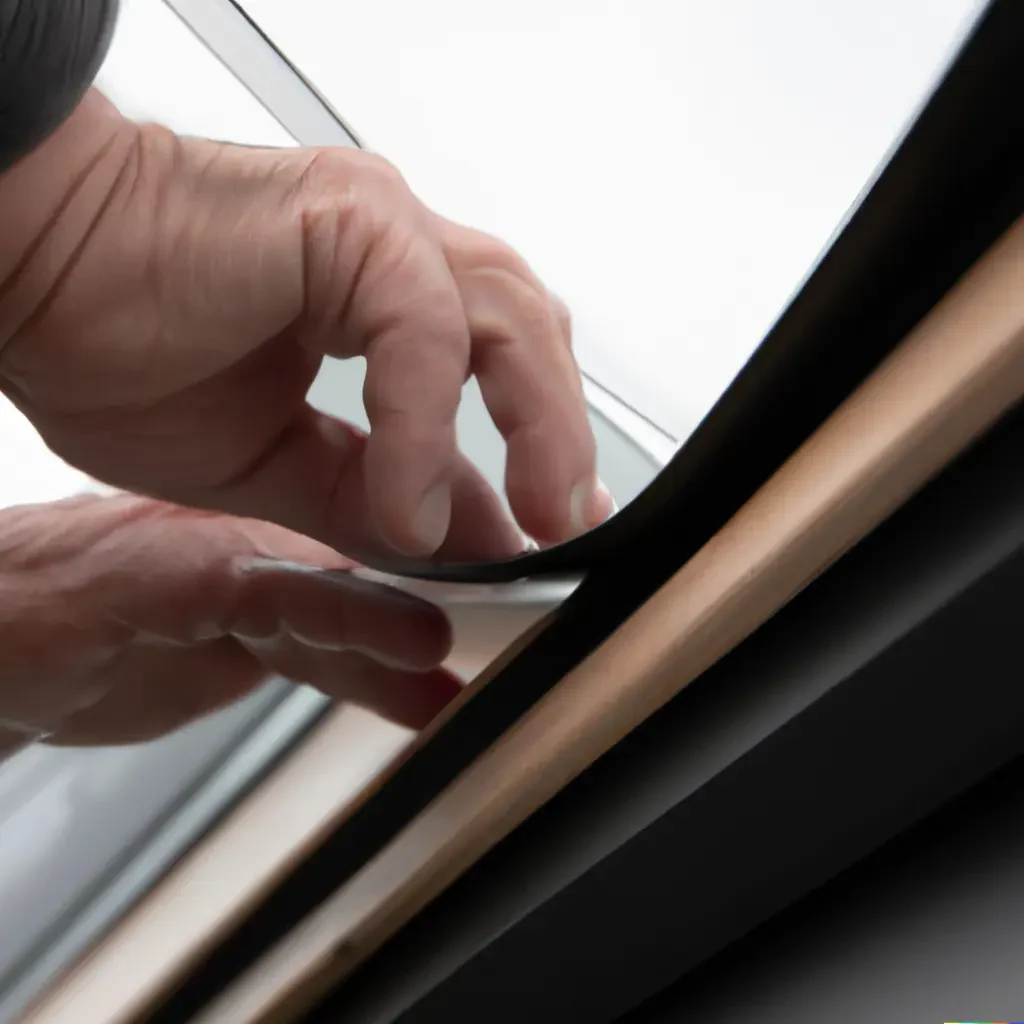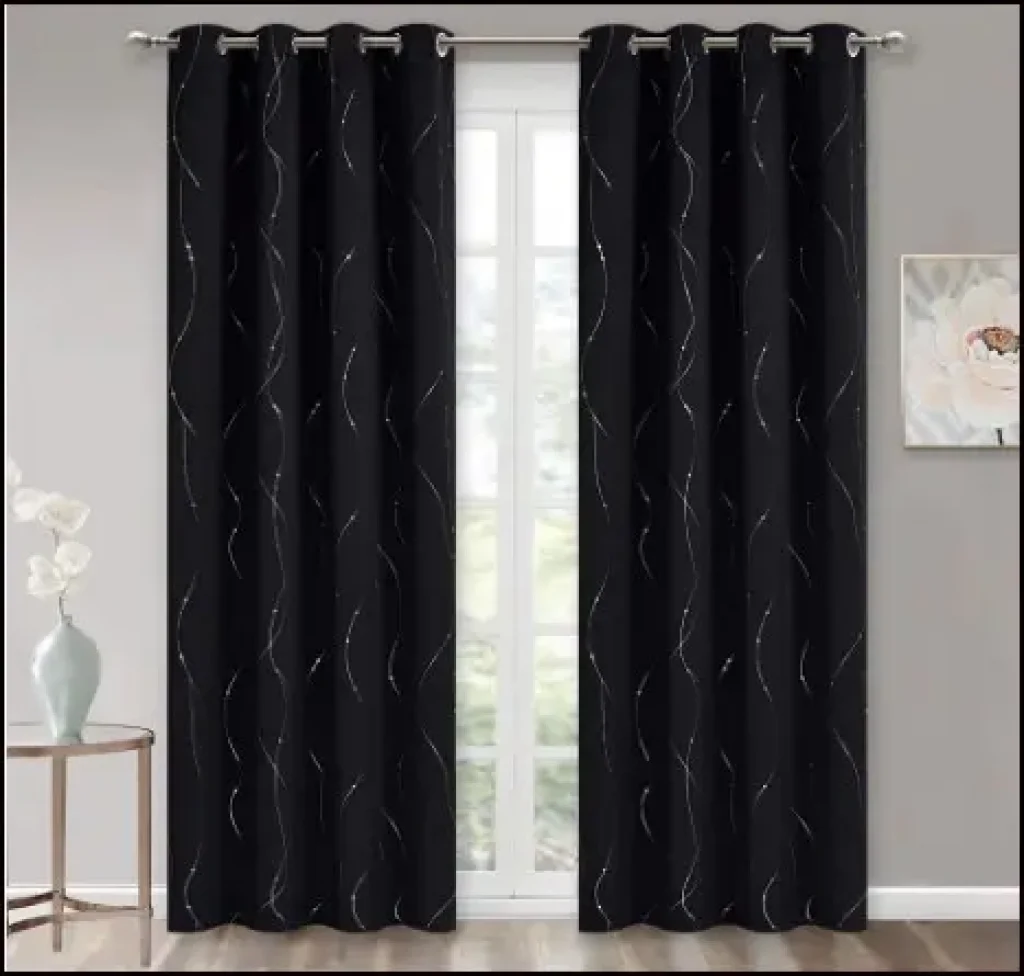How To Soundproof a Sash Window? {5 Proven Ways}

Dear sash window owners! We all know how rare and valuable peace and quiet can be in this noisy world.
Unfortunately, even our lovely sash windows can sometimes let in unwanted noise along with that refreshing breeze.
But don’t worry! Soundproofing your sash window can help realm your peace.
In this guide, we are going to talk about how to soundproof a sash window effectively.
If you are ready then let’s do this!
The Concept Behind Sash Window Soundproofing
The concept behind sash window soundproofing lies in understanding the principles of sound transmission and how it interacts with the various components of the window structure.
As we all know, sound is a form of mechanical energy, travels through air in the form of waves. When these waves encounter a barrier, such as a sash window, they can be reflected, absorbed, or transmitted.
To effectively soundproof a sash window, it is crucial to address two primary paths of sound transmission: airborne sound and structure-borne sound.
- Airborne sound refers to sound waves that travel through the air and can easily penetrate gaps and openings in the window.
- Structure-borne sound, on the other hand, is vibrations that are directly transmitted through the window frame, glass, or other components.
To combat airborne sound, the aim is to minimize the gaps and cracks through which sound waves can penetrate. Structure-borne sound can be reduced by addressing the window’s resonance and vibration.
This can be achieved by incorporating sound-absorbing materials such as acoustic laminates or secondary glazing.
Understanding the Structure of Sash Window

So if want to acoustic-treat your window, you need to have a good understanding of its structure. Especially if you’re dealing with more intricate types of windows like jalousie windows, bay windows, and sash windows.
A typical sash window consists of several components that contribute to its functionality and overall performance.
- Frame: The frame forms the outer structure of the window and provides support and stability. It is typically made of wood, vinyl, or aluminum.
- Sashes: Sashes are movable panels within the window frame. In a traditional sash window, there are two sashes: the top sash and the bottom sash. They can slide vertically, allowing for ventilation and access to the outside.
- Glazing: The glazing refers to the glass panes that are fitted within the sash window. Single or double glazing may be used.
- Meeting Rail: The meeting rail is the horizontal component where the top and bottom sashes meet when the window is closed. It plays a role in maintaining a tight seal and preventing air and sound leakage as well.
- Hardware: Sash windows incorporate various hardware elements, including locks, pulls, and pulleys, which facilitate the smooth operation of the sashes and secure the window when closed.
By familiarizing yourself with the components and construction of your sash window, you can make informed decisions about the appropriate measures to take in order to achieve optimal soundproofing results.
Now let’s talk about how you can soundproof your sash windows effectively.
5 Effective Ways to Soundproof a Sash Window
In this comprehensive guide, we will explore FIVE proven ways to soundproof a sash window, ranging from simple do-it-yourself (DIY) techniques to professional solutions.
By understanding the principles behind each method, the materials required, step-by-step instructions, approximate costs, and additional insights, you will be equipped with the knowledge to choose the right soundproofing solution for your needs.
1: Weatherstripping and Sealing

When it comes to soundproofing a sliding window, a sash window of any windows, one effective and cost-efficient method is weatherstripping and sealing.
By minimizing gaps and cracks, you can prevent sound leakage and create a tighter seal.
Follow these steps to get started:
- Step 1: Inspect the window for any gaps or cracks.
- Step 2: Measure and cut appropriate weatherstripping material.
- Step 3: Clean the window frame and sash surfaces.
- 4: Apply the weatherstripping along the frame and sash, sealing any gaps tightly.
This simple yet effective technique can make a huge difference by reducing sound transmission through your sash window.
The cost of weatherstripping is generally AFFORDABLE and cheap, typically ranging from $10 to $50, depending on the quantity you want.
2: Window Insulation Film
When it comes to soundproof windows without replacing them window insulation film often comes to mind. It is a popular and cost-effective method for soundproofing a sash window.
This thin, transparent film helps create an additional barrier against sound. To make your sash window quieter using window insulation film, here’s what you need to do:
- Step 1: Measure the dimensions of your window.
- Step 2: Clean the window glass thoroughly.
- Step 3: Cut the window insulation film according to measurements.
- Step 4: Apply the film to the window using double-sided tape.
- Step 5: Once the film is in place, use a hairdryer on low heat to shrink the film, removing any wrinkles and creating a tight fit.
Window insulation film kits are widely available and it typically cost around just $10 to $20 per window, making this method an affordable option for sound-resist a single-pane sash window window.
3: Soundproof Curtains or Blinds

If you are hunting for the easiest and aesthetically pleasing option to soundproof your bay window, sash window, or need window soundproofing for a rental, I’d recommend using soundproof curtain or blind.
These specially designed window coverings are made of dense, noise-absorbing materials that help block and reduce external noise through your noisy window.
All you need to do is just purchase heavy fabrics curtain or blind whatever you prefer that is specifically designed for sound reduction. And once you have that, install it on your window.
To install curtains, you will need to first install the curtain rod. After installing the rod, hang the soundproof curtain, ensuring they cover the entire window area.
If you are using blinds, follow the installation instructions provided with the blinds to ensure proper fitting. Soundproof curtains or blinds not only enhance your window’s soundproofing capabilities but also add a touch of elegance to your space.
The cost of soundproof curtains or blinds can vary depending on their size, material, and brand. Prices typically range from $30 to $100 or more per window, depending on your preferences and budget.
These curtains and blinds are a popular and temporary solution for reducing noise coming through windows.
4: Secondary Glazing
Secondary glazing is a highly effective method and by far the best option for soundproofing sash windows, especially if you are seeking a professional and long-lasting solution and reduces the noise level to a great extent.
This basically involves adding an additional layer of glazing to the existing window, creating an air gap that helps minimize the sound transmission.
To get started with this method, measure the dimensions of your window frame and purchase acrylic or polycarbonate glazing sheets, adhesive or magnetic strips, and mounting hardware suitable for your window.
Cut the secondary glazing sheets to fit the window frame precisely. Install adhesive or magnetic strips on the window frame, following the manufacturer’s instructions.
Press the secondary glazing sheets onto the strips, ensuring a tight fit. Finally, seal any remaining gaps with weatherstripping to enhance the soundproofing effect.
Secondary glazing provides excellent noise reduction while allowing natural light to enter your space. The cost of secondary glazing materials varies based on the size of the window. As a rough estimate, the cost can range from $50 to $200 or more per window.
Related post: Do double-pane window reduce noise?
5: Professional Soundproofing Solutions
Soundproofing a sash window can be a bit challenging, much like soundproofing a Velux window. Any little mistakes can literally ruin your soundproofing project. And DIY methods, while valuable, but may not always give you significant results especially if you are sound blocking an old window.
So if you want the highest level of soundproofing for your sash window or have specific requirements, it may be worth exploring professional soundproofing solutions.
Consulting with a professional soundproofing expert will ensure you receive tailored advice and access to advanced soundproofing techniques.
Professionals can recommend specialized products such as acoustic laminated glass, which consists of multiple layers of glass with an interlayer that absorbs sound vibrations.
Retrofitting your window with soundproofing materials, such as sound-dampening panels or specialized acoustic treatments, may also be considered.
Well, it is also important to take the cost into account. The cost of professional soundproofing solutions mostly depends on the chosen products, the size and complexity of your sash window, and the labor involved.
FAQ – Soundproofing a Sash Window
Q1: Can I soundproof my sash window myself?
Yes, you can! There are various DIY methods you can employ to soundproof your sash window, such as weatherstripping, window insulation film, and using soundproof curtains or blinds. These methods are cost-effective and relatively simple to implement.
Q3: How effective are DIY soundproofing methods?
DIY soundproofing methods can provide noticeable improvements in reducing noise transmission through your sash window. The level of effectiveness vary based on the severity of the noise pollution and the specific characteristics of your window.
Q4: Are professional soundproofing solutions worth the cost?
Professional soundproofing solutions, such as secondary glazing or acoustic laminated glass, offer advanced techniques for maximum sound reduction. They are more costly than DIY methods but can provide a huge improvements in soundproofing performance.
Q5: How much does soundproofing a sash window cost?
The cost of soundproofing a sash window depends depends on factor, including the methods you choose, materials you used, your window size, and whether you opt for DIY or professional solutions. DIY methods are generally more affordable, ranging from around $10 to $200, while professional solutions can vary significantly based on complexity and materials, usually ranging from $150 to $700.
Q6: Will soundproofing my sash window completely eliminate all noise?
No, soundproofing methods can reduce noise transmission to certain extent but they cannot completely elimination of all noise. Soundproofing measures aim to minimize and attenuate noise, creating a quieter indoor environment.
Q7: Can I combine multiple soundproofing methods for better results?
Yes, you can! Combining different soundproofing methods can enhance the overall effectiveness. For instance, using weatherstripping, window insulation film, and soundproof curtains together can provide a more better soundproofing solution.
My Final Note About Soundproofing a Sash Window
In conclusion, soundproofing your sash window can significantly enhance the tranquility of your living space. By implementing the five methods mentioned in this guide, you can effectively soundproof your sash window.
Whether you opt for simple DIY techniques like weatherstripping, or window insulation film or explore more advanced options such as soundproof curtains, secondary glazing, or professional soundproofing solutions, there is a soundproofing method suitable for every budget and preference.
Keep in mind to assess your specific requirements, consider the level of soundproofing you desire. And I will also recommend trying multiple methods to achieve better results.
With determination, and a bit of investment, you can transform your sash window into a gateway to tranquility, shielding you from the noise and creating a serene living space to enjoy.
So, select the method that fits you, follow the step-by-step instructions, and start your journey towards a quieter and more peaceful home.
